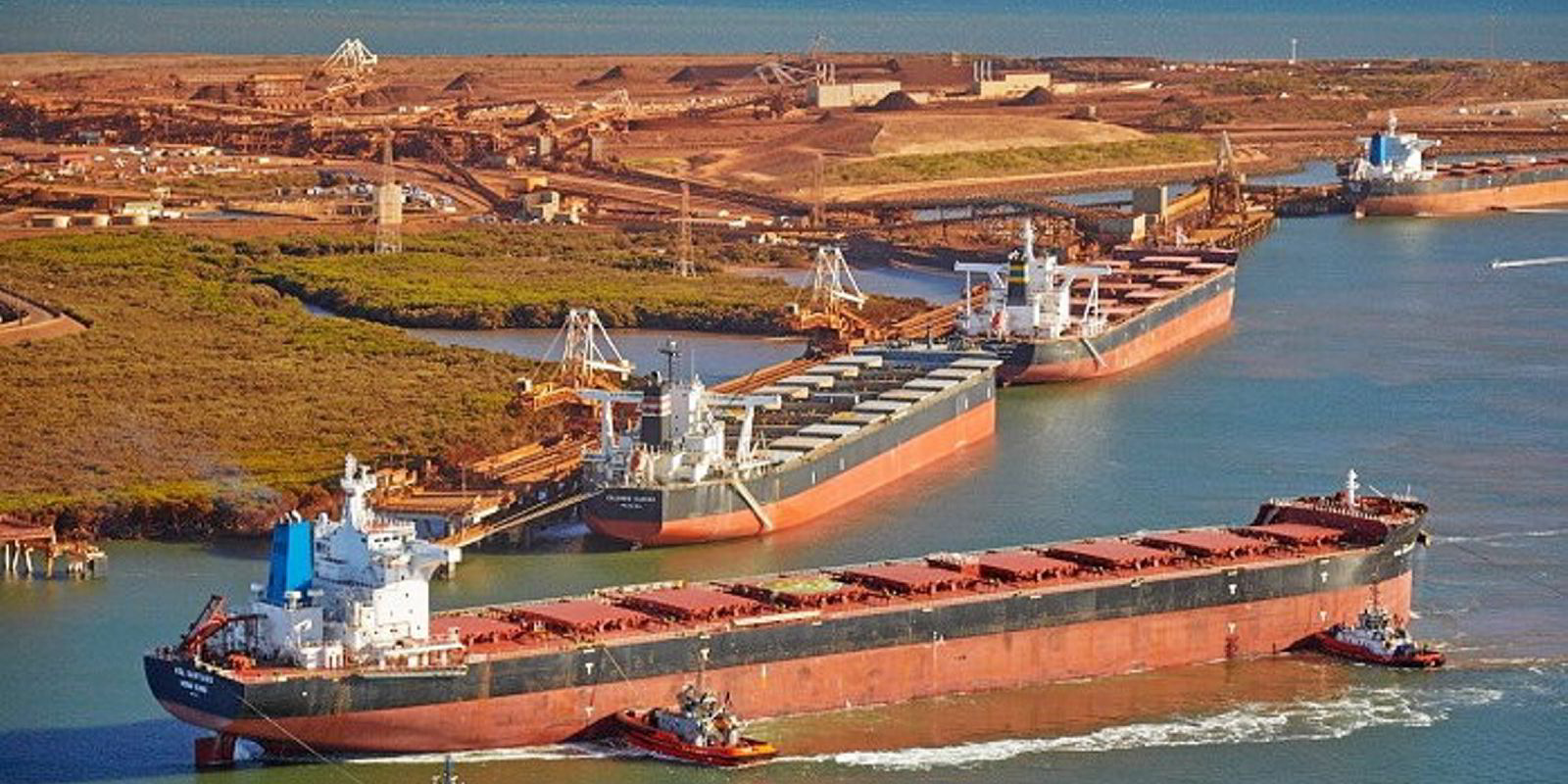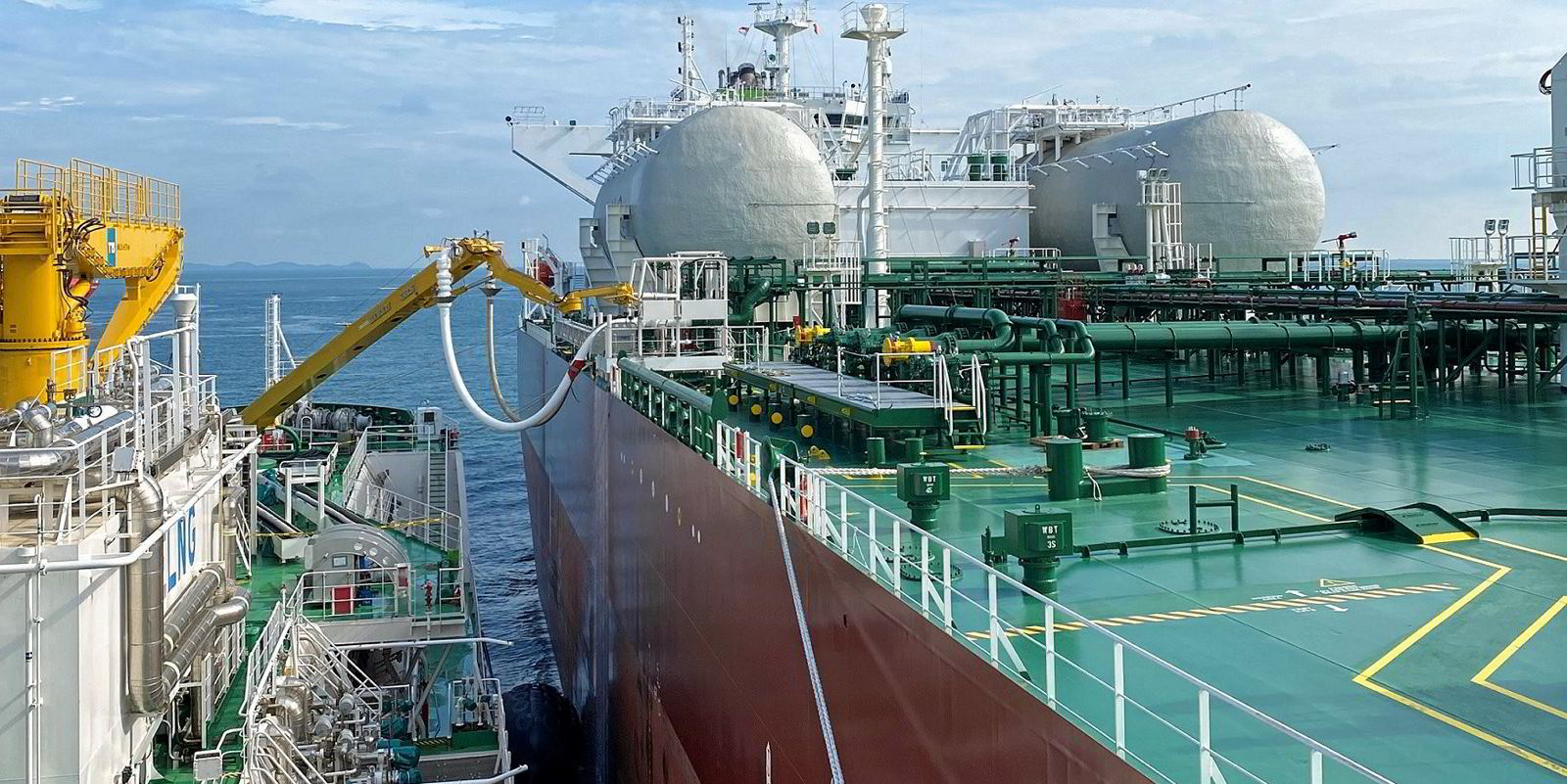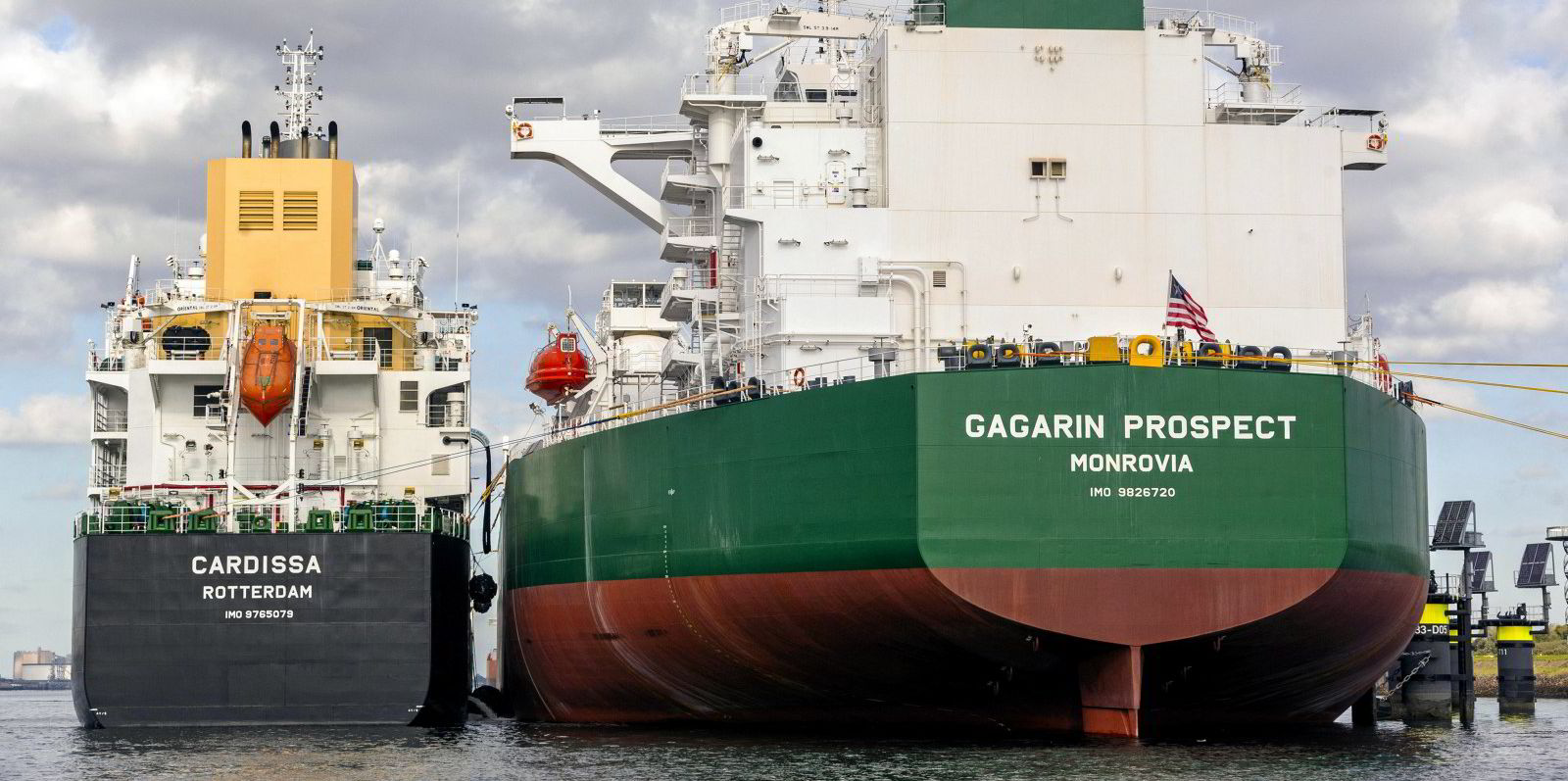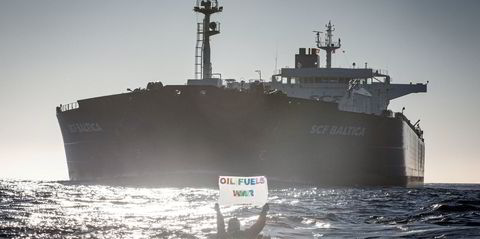Newbuilding orders for LNG bunker vessels (LNGBVs) have been stacking up in 2021, with a steady stream signed or promised.
TradeWinds has to date this year reported eight firm orders for vessels ranging from 5,000 cbm to 18,000 cbm and one tipped to be used for offshore bunkering of 30,000 cbm.
Brokers reported that the market is flooded with LNG supply tenders as shipowners have decided to take the LNG-fuelling ticket for their newbuilding moves to nail down bunkers.
There has also been a shift to larger globally trading LNG-fuelled newbuildings, which has increased the scale of bunkering volumes needed.
However, other shipowners are looking at the need to invest in bunkering infrastructure for alternative fuels such as ammonia, methanol and later hydrogen, raising questions about the longer-term requirements for LNGBVs.
The LNGBV newbuilding uptick is hardly surprising, given the growth in orders for LNG-fuelled newbuildings. But many details are still kept under wraps.
Pricing is clear for some units and decidedly blurry for others, as are the identities of some charterers and where and how the vessels will operate.
While Scale Gas’ joint ventures with Knutsen OAS Shipping on a 5,000-cbm vessel and Peninsula for a 12,500-cbm LNGBV are for ships that will serve specific ports, others, such as Kanfer Shipping’s two 6,000-cbm vessels, appear purely speculative.
Anthony Veder has been evasive about its recent 30,000-cbm small-scale LNG carrier newbuilding, but sources said it has been contracted as an offshore LNG bunkering vessel for Australia.
This can make LNGBV newbuildings tricky to count, particularly as some vessels, such as Avenir LNG’s ships, will be used for both bunkering and trading.
Some owners and operators have yet to sign LNGBV newbuilding contracts but have indicated they will move this year. SeaspanLNG has signed a letter of intent with a Chinese yard and Titan LNG is tendering for a new vessel designed to supply separate volumes of bio-LNG.
However, brokers advise caution on the true number of incoming orders, citing an element of double-counting as companies offer in on multiple projects.
| Owner | No. of vessels | Size (cbm) | Shipyard | Delivery | Price |
| Kogas | 1 | 7,500 | Hyundai Heavy Industries | 2023 | Unknown |
| Knutsen OAS/Scale Gas | 1 | 5,000 | Astilleros Armon | 2022 | $41.3m |
| Pan Ocean | 1 | 18,000 | Hyundai Mipo Dockyard | 2023 | $55m |
| Korea Line | 1 | 18,000 | Hyundai Mipo Dockyard | 2023 | $60m |
| Fratelli Cosulich | 1 | 8,200 | CIMC SOE | 2023 | $39m |
| Kanfer Shipping | 2 | 6,000 | Taizhou Wuzhou | 2023 | Unknown |
| Anthony Veder | 1 | 30,000 | Hyundai Samho | 2023 | Unknown |
| Peninsula/Scale Gas | 1 | 12,500 | Hyundai Mipo Dockyard | 2023 | Unknown |
Classification society DNV has been logging the numbers of LNG-fuelled vessels. Principal consultant Martin Wold reported that the figure has just crashed the 500-ship mark, highlighting potential demand.
Wold said a further 15 dual-fuel newbuildings were added to its database in May, mainly large bulk carriers, small tankers and some tugs.
There are now 200 LNG-fuelled vessels in operation, he said, with more than 300 on order. He named Tor Olav Troim’s Magni Partners, Eastern Pacific Shipping, Anglo American and John T Essberger as among those that ordered tonnage in May.
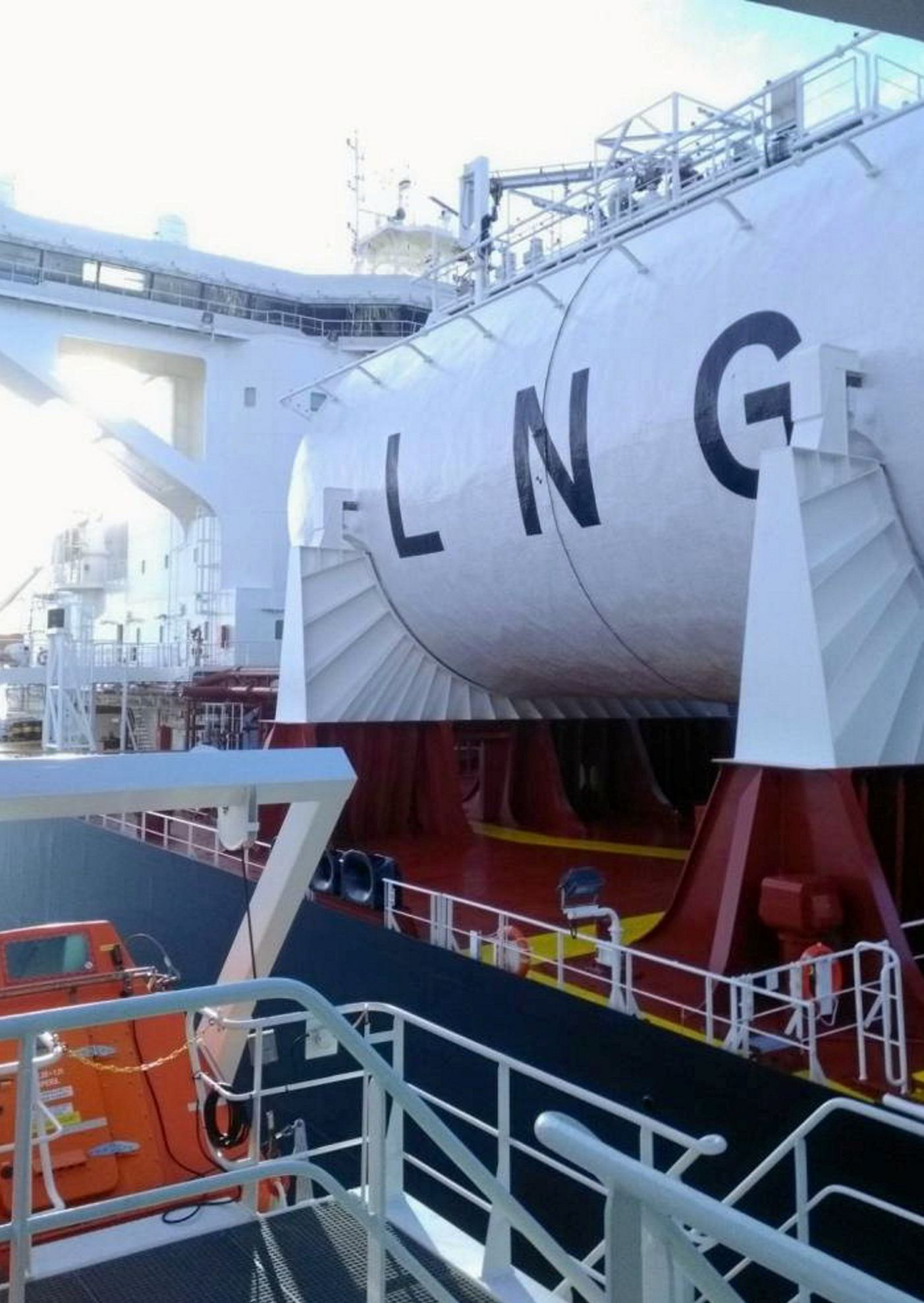
More LNG-fuelled newbuildings are expected and DNV forecasts demand for LNG as a fuel to triple to more than 3.5m tonnes by 2024.
Industry coalition SEA-LNG’s April report claimed that using LNG as a fuel can offer a 23% reduction in greenhouse gas emissions when measured on a well-to-wake basis compared with current oil-based marine fuels. This, combined with other energy-efficiency measures, will enable some owners to meet 2030 emissions targets.
In addition, LNG advocates point to the opportunities to transition seamlessly to carbon-neutral bio-LNG, and later synthetic LNG, as avenues to decarbonise away from fossil LNG without the need for vessel modification.
But some have raised the first quizzical eyebrow at LNG-fuelling pioneer Shell’s move to sell and leaseback its first purpose-built LNGBV, the 6,500-cbm Cardissa (built 2017), for a period of six years, extendable to 2029.
Shell has been a major driver of LNG-fuelling, but is it too starting to see a shelf life for what was a very expensive asset?
The Society for Gas as a Marine Fuel said 24 LNGBVs are in operation — a fivefold increase in the past five years.
Presenting its Shell LNG Outlook in February, Shell said it envisages a confirmed demand for LNG bunkers of more than 3 million tonnes per annum and believes the number of LNGBVs will reach 45 by 2023.
Shell also forecast demand for LNG as fuel to rise to between 30 mtpa and 50 mtpa by 2040.
If these forecasts hold good, one can expect the number of LNGBV newbuilding orders to continue to rise.

